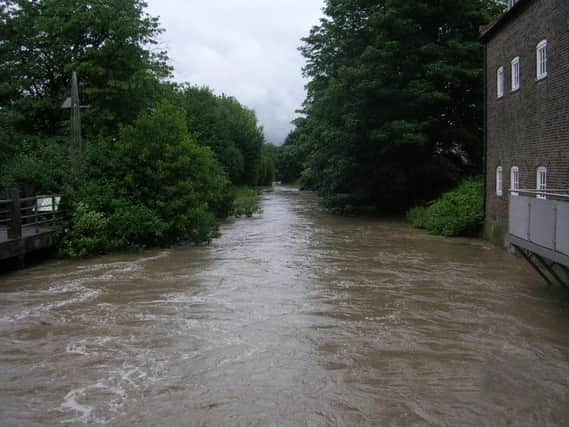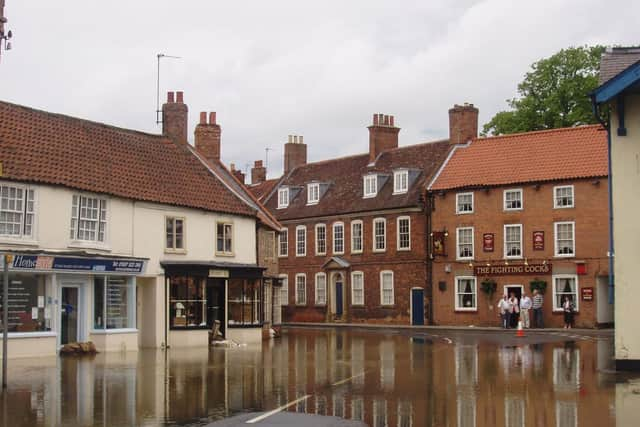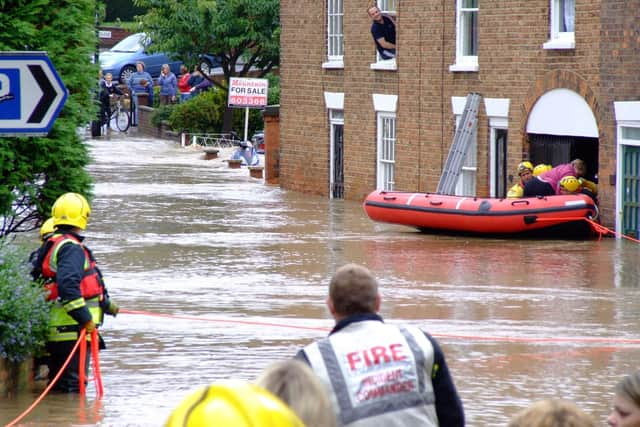East Lindsey people AND properties most at risk of flooding


Almost 300,000 people in England live in areas at the highest risk of flooding, with one in every 10 people affected in some of the most vulnerable areas.
While England’s coastal towns and cities remain the most vulnerable to flooding, thousands have been revealed to be at high risk in some of the country’s biggest inland cities.
Advertisement
Hide AdAdvertisement
Hide AdEnvironment Agency figures show 6.1 percent of people who live in flood risk areas are at high risk, which means there is a chance of flooding of greater than 1 in 30 each year, while 22.7 percent are in medium risk, which is a chance of flooding of between 1 in 30 and 1 in 100 each year. Overall, this affects 4,823,000 people.


The Environment Agency maps floodplains and uses modelling of flood defences as well as local expertise, to assess the flood risk of local areas, and the Agency calculated the number of people at risk of flooding from rivers and seas by multiplying residential property numbers by the average household size of 2.36.
This showed that the East Lindsey area has the greatest number of people at high risk from flooding – just over 9,500. This is followed by Runnymede with just over 8,200 and East Devon with 8,100.
The Environment Agency has also identified 2.8 million properties are at risk of flooding in England, representing 8.4 percent of all properties.
Advertisement
Hide AdAdvertisement
Hide AdEast Lindsey has the greatest number of properties at high risk with 6,600, followed by East Devon with over 5,500 and Runnymede with over 4,700.


Proportionally, Runnymede had the greatest percentage of properties at high risk with 9.2 percent, twice as much as East Devon which had 4.8 percent of properties at high risk and East Lindsey 4.6 percent.
Communities in Louth and Horncastle were significantly affected by the floods of summer 2007, when over 200 properties in the area were flooded.
Two Flood Alleviation Schemes (FASs) worth nearly £15 million were launched in July 2017 in Louth and Horncastle, which aim to collectively reduce flood risk to over 350 properties in a partnership of the Environment Agency, Lincolnshire County Council, East Lindsey District Council, Anglian Water and the Lindsey Marsh and Witham Third Internal Drainage Boards.
Advertisement
Hide AdAdvertisement
Hide AdIn addition to reducing flood risk to hundreds of properties in Louth and Horncastle, the two schemes also deliver benefits to the environment, providing a habitat for water voles.
Councillor Eddy Poll, then-Executive Member for Environmental Management at Lincolnshire County Council and Chairman of the Anglian Northern Regional Flood and Coastal Committee, said at the time: “We all know the kind of devastation flooding can cause within a community – that’s why projects like this are so vital. These new defences will protect hundreds of local families from the misery and disruption that flooding brings. It’s impossible to prevent flooding entirely, but we’ll continue to work with our partners to ensure that local communities are as well-defended and well-prepared as possible.”
Leader of the East Lindsey District Council, Councillor Craig Leyland said: "After the devastating flooding that we have seen in 2007, we hope that these schemes will give residents greater peace of mind and protection from the risk and threat of flooding in the future.”
But campaigners say more needs to be done to better protect communities.
Advertisement
Hide AdAdvertisement
Hide AdFriends of the Earth campaigner Paul de Zylva said Prime Minister Liz Truss needs to do more.
“It’s shocking that millions of people and properties across the UK are at risk from flooding, and alarmingly the threat is expected to grow as climate change takes hold,” he said
“The new Prime Minister must do far more to make our communities and infrastructure resilient to the more frequent and intense weather extremes that are likely to batter Britain – such as flooding and droughts.”
A spokesperson for the Department for Environment, Food and Rural Affairs said billions are being invested in flood and coastal defences:
Advertisement
Hide AdAdvertisement
Hide Ad“We recognise the threat from climate change and sea level rise, which is why we are investing a record £5.2 billion from 2021 in flood and coastal defences to better protect communities across the country.
“This record investment builds on the successful delivery of the previous £2.6 billion investment between 2015 and 2021, better protecting more than 314,000 homes - and our long-term policy statement on flood and coastal erosion risk management is the most comprehensive in a decade.”